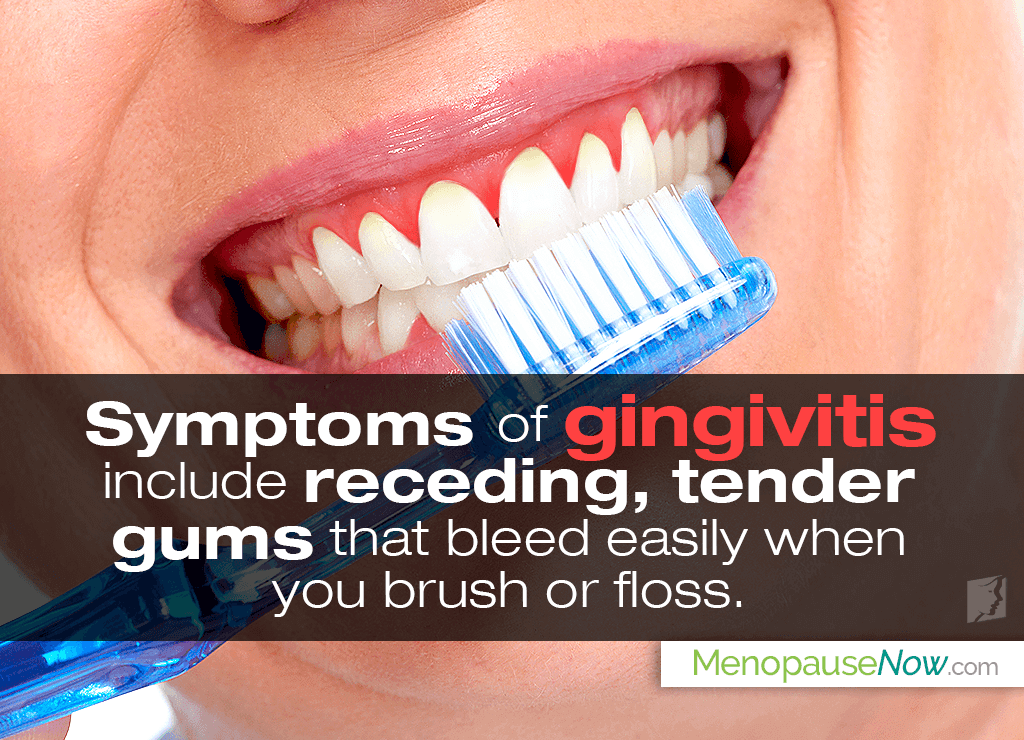A woman's smile is one of the first things people notice about her. Accordingly, when her dental health is compromised and gingivitis develops due to poor oral hygiene habits among other factors, she may run for help quicker rather than later.
Continue reading to find out important things to know about gingivitis, the preliminary stages of periodontal disease, during menopause so you can go back to having a smile of which you can be proud.
Define Gingivitis
Gingivitis is a mild form of periodontal disease that causes swelling, redness, and inflammation of the gums around the base of your teeth.
Causes of Gingivitis
Gingivitis is commonly caused by poor oral hygiene that doesn't properly remove the buildup of daily plaque.
This accumulation of plaque eventually turns into hardened tartar, which creates a protective shield for bacteria and causes irritation along the gum line.
The longer the plaque and tartar remain on your teeth, the more irritated the gums become, thus causing inflammation, swollenness, and easy bleeding.
If left alone, gingivitis can progress into periodontitis, leading to eventual tooth loss.
Nevertheless, menopausal women are at an increased risk of suffering from gingivitis and other gum problems due to constant variations of their sex hormones, thus compromising dental health.
Symptoms of Gingivitis
Symptoms that are characteristic of gingivitis include receding, tender gums that bleed easily when you brush or floss; swollen or puffy gums; dark red gums; or bad breath.
As soon as you notice any of these symptoms, it is important to schedule an appointment with your dentist in attempt to reverse damage of gingivitis before it turns into periodontitis.
Treatment for Gingivitis
Treatment for gingivitis depends upon the condition's progression and if tooth loss has occurred already.
Generally, successful gingivitis treatment at home begins with good oral care that includes brushing your teeth twice a day with daily flossing in addition to the use of daily mouth rinse to help reduce plaque.
Moreover, schedule professional dental cleanings every six to 12 months to remove buildup of plaque, tartar, and bacterial growths.
If there is severe inflammation, root planning will take place, which smoothens out root surfaces and removes bacteria produced by inflammation, thus allowing proper healing and depressing further buildup of tartar and bacteria.
Moreover, menopausal women who suffer from gum problems that are exacerbated by the drastic hormonal fluctuations taking place in their bodies would do well by following gum problem treatments that revolve around hormonal balance.
As a minimum, they include optimizing your diet to be rich in phytoestrogens and calcium, discouraging bad habits of smoking and chewing tobacco, as well as performing aforementioned dental hygiene practices, among others.
Key Takeaways
While gingivitis may start off as mild inflammation and redness, it can develop into tooth loss and periodontal disease if left unmanaged and untreated, especially in menopausal women whose hormones make them susceptible to compromised dental health.
As soon as - or even better, before - you notice symptoms of dark red, swollen, or puffy gums along with bad breath, take action to prevent the condition from progressing. Proper oral care can get you back on track to having good oral health, along with yearly or bi-yearly dental cleanings.
Furthermore, menopausal women would do well with following these measures and more proven to balance hormones and optimize endocrine system health.
Sources
- Bhardawj, A. & Bhardwaj, S.V. (2012). Effect of menopause on women's periodontium. Journal of Mid-Life Health, 3(1), 5-9. doi: 10.4103/0976-7800.98810
- Mayo Clinic. (2017). Gingivitis: Symptoms & causes | Diagnosis & treatment. Retrieved February 12, 2019, from https://www.mayoclinic.org/diseases-conditions/gingivitis/symptoms-causes/syc-20354453 | https://www.mayoclinic.org/diseases-conditions/gingivitis/diagnosis-treatment/drc-20354459


